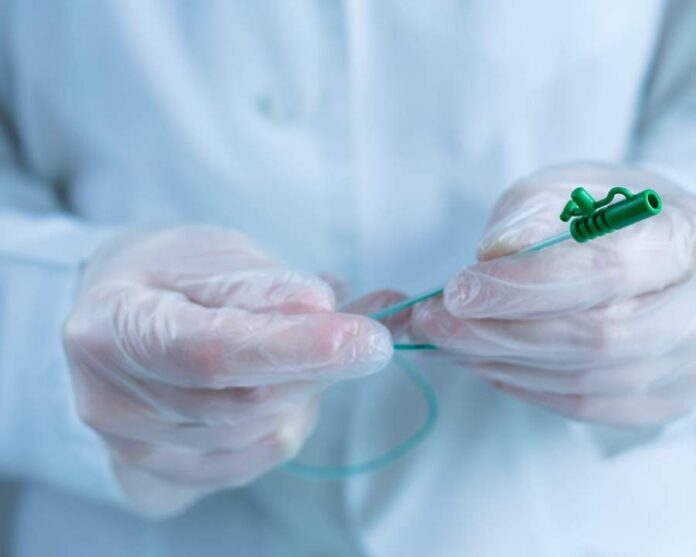Catheter care and asthma awareness are pivotal aspects of modern healthcare, requiring comprehensive training and heightened awareness among both patients and healthcare professionals. Proper management of Catheter care training and asthma can significantly improve patient outcomes and quality of life.
Catheters are medical devices used to manage and drain bodily fluids in patients who are unable to do so naturally. Proper care and maintenance of catheters are essential to prevent complications such as infections and blockages. Without adequate training, healthcare providers may inadvertently contribute to patient discomfort and health risks.
Types of Catheters and Their Uses
There are several types of catheters tailored to different medical needs. Foley catheters, for example, are commonly used for urinary retention, while central venous catheters facilitate the administration of medications or fluids directly into large veins. Understanding the specific purpose and care requirements of each type is crucial in preventing complications.
Basic Anatomy and Physiology Relevant to Catheter Care
A foundational understanding of the urinary system is necessary for effective catheter care. The risks associated with catheterization include urinary tract infections (UTIs), bladder spasms, and tissue damage. Healthcare providers must be proficient in recognizing these risks and taking preventive measures.
Essential Equipment for Catheter Care
Proper catheter care begins with the use of appropriate equipment. Catheterization kits should include sterile gloves, antiseptic solution, and catheter insertion supplies. Maintaining a sterile field during insertion minimizes the risk of infections and ensures patient safety.
Step-by-Step Guide to Catheter Insertion
The process of catheter insertion requires meticulous preparation and adherence to aseptic technique. Before insertion, healthcare providers must obtain informed consent, gather supplies, and prepare the patient physically and emotionally. Following insertion, proper positioning of the catheter and securing it in place are critical steps to prevent displacement.
Daily Catheter Care Practices
Once a catheter is in place, daily care practices are essential to prevent complications. Proper hygiene, such as regular cleaning of the insertion site and monitoring for signs of infection, should be emphasized. Healthcare providers should educate patients on recognizing abnormal symptoms and when to seek medical attention.
Recognizing and Managing Complications
Despite meticulous care, complications such as infections, blockages, and leakage can occur. Early recognition of symptoms such as fever, pain, or cloudy urine is crucial. Prompt intervention, including proper antibiotic therapy or catheter replacement, can mitigate risks and improve patient outcomes.
Patient Education on Catheter Care
Effective communication with patients is vital in promoting understanding and compliance with catheter care protocols. Healthcare providers should educate patients on proper hygiene practices, signs of complications, and strategies for maintaining comfort with a catheter. Empowering patients to participate in their care reduces anxiety and enhances overall satisfaction.
Training Programs for Healthcare Professionals
Formal training programs for healthcare professionals are essential for ensuring competence in catheter care. These programs cover theoretical knowledge, practical skills, and infection control measures. Continuous professional development through workshops, seminars, and online resources is encouraged to stay updated on best practices and innovations in catheter management.
Importance of Asthma Training and Awareness
Asthma is a chronic respiratory condition characterized by inflammation and narrowing of the airways, leading to recurrent episodes of wheezing, breathlessness, chest tightness, and coughing. Globally, Asthma training awareness affects millions of individuals and requires ongoing management to prevent exacerbations and improve quality of life.
Understanding Asthma: Causes and Triggers
Asthma results from a complex interplay of genetic predisposition and environmental factors. Common triggers include allergens (e.g., pollen, dust mites), respiratory infections, air pollutants, and exercise. Identifying and avoiding triggers are essential strategies in asthma management.
Symptoms and Early Warning Signs of Asthma
Recognizing early symptoms and warning signs of asthma is crucial for timely intervention. Respiratory distress indicators include shortness of breath, wheezing sounds during breathing, and persistent coughing, particularly at night or early morning. Non-respiratory symptoms such as fatigue and anxiety may also signal an impending asthma attack.
Diagnosis and Treatment Options
Diagnosing asthma involves a combination of patient history, physical examination, and pulmonary function tests (e.g., spirometry). Treatment options aim to control symptoms and prevent exacerbations through medications such as bronchodilators (e.g., albuterol) and inhaled corticosteroids. Personalized asthma action plans empower patients to manage their condition effectively.
Lifestyle Management and Asthma Prevention
Beyond medications, lifestyle modifications play a pivotal role in asthma management. Creating an asthma-friendly environment involves minimizing exposure to triggers, ensuring adequate ventilation at home and work, and maintaining regular medical follow-ups. Education on recognizing and responding to asthma symptoms enhances patient self-management and reduces emergency room visits.
Conclusion
In conclusion, comprehensive training in catheter care and heightened awareness of asthma are critical in enhancing patient safety and improving health outcomes. By equipping healthcare professionals with the necessary knowledge and skills, we can mitigate risks associated with catheterization and empower asthma patients to lead fulfilling lives.
